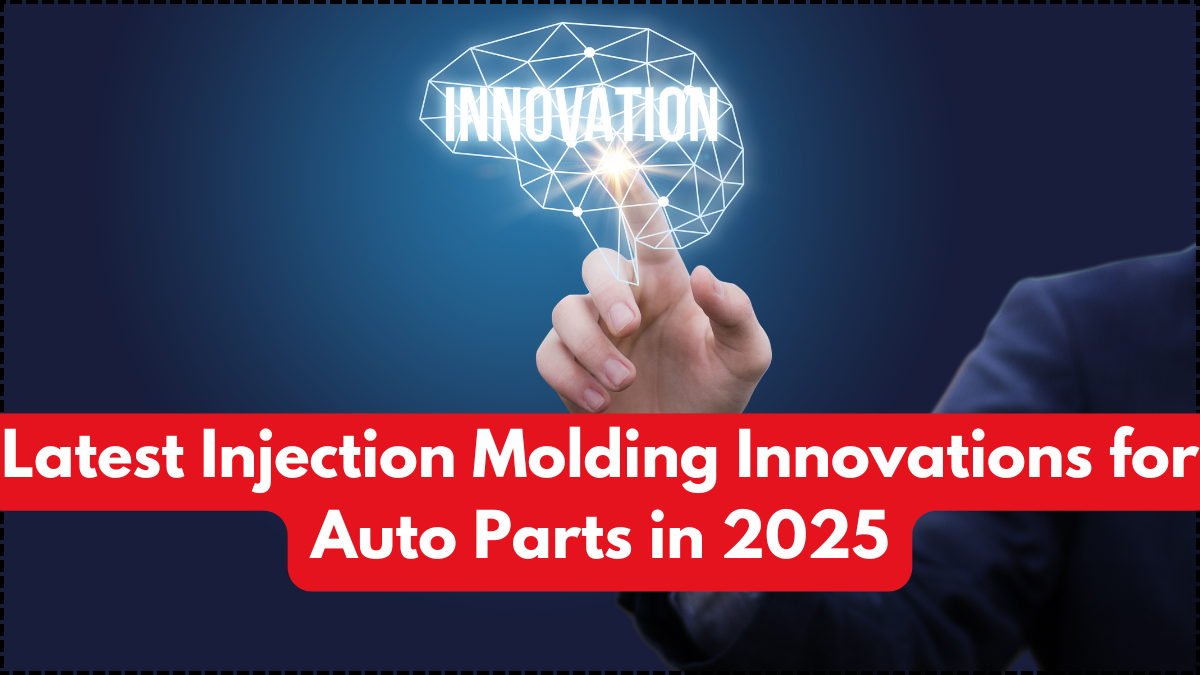The automobile manufacturing industry in India and across the world is experiencing a significant transformation with advanced Injection Molding techniques. This innovation is not only improving the quality and durability of automotive components but is also making auto part production faster and more cost-effective. In 2025, manufacturers are adopting smart technologies and eco-friendly practices that are redefining how vehicles are built.
Injection Molding has become a cornerstone of the automotive sector because of its ability to create complex shapes with high precision. With new technologies entering the market, the process has evolved into an even more efficient and sustainable manufacturing method. These innovations are helping automakers meet the growing demands for high-performance parts and aligning production with global quality standards.

The Role of Injection Molding in Auto Part Production
In the modern automotive industry, Injection Molding is extensively used for producing both interior and exterior components. From dashboards to bumpers, this process ensures consistency, strength, and excellent surface finishing. The integration of automation and AI-driven machinery is further enhancing auto part production, allowing manufacturers to cut down on manual labor while increasing overall efficiency.
Key advantages of Injection Molding for auto part production include:
-
Ability to produce intricate shapes with minimal waste.
-
High repeatability for large-volume manufacturing.
-
Improved durability of automotive components.
-
Compatibility with sustainable materials, aligning with eco-friendly standards.
Technological Advancements in 2025
The year 2025 marks a major leap in Injection Molding technology. Smart molding machines are now equipped with advanced sensors and automated quality checks to reduce errors and optimize production cycles. Additionally, lightweight composites and high-performance thermoplastics are being increasingly used for auto part production, offering superior strength while reducing vehicle weight.
Some of the major advancements in 2025 include:
-
Hybrid Injection Molding: Combining traditional molding with additive manufacturing for faster prototyping.
-
Recycled Material Integration: Using recycled plastics and bio-based resins for eco-friendly production.
-
AI and IoT Integration: Monitoring every step of Injection Molding for precision and quality control.
-
High-Speed Molding: Reducing cycle times and improving efficiency in auto part production.
Applications of Injection Molding in Auto Parts
The automotive industry uses Injection Molding for a variety of components that require accuracy and long-lasting performance. Below is a table showing some common automotive parts manufactured using Injection Molding and the benefits they bring:
| Automotive Part | Material Used | Advantage in Auto Part Production |
|---|---|---|
| Dashboard panels | ABS Plastic | Excellent finish, high durability |
| Bumpers | Polypropylene (PP) | Lightweight, impact-resistant |
| Door trims | Polyurethane (PU) | Enhanced design flexibility |
| Engine components | Nylon and composites | Heat resistance, long life |
| Lighting components | Polycarbonate (PC) | Clarity and durability |
These innovations show why Injection Molding continues to be the preferred technique for auto part production in 2025.
Industry Growth and Demand
With the rise of electric vehicles and the push for sustainable transportation, Injection Molding is evolving to meet new demands. Manufacturers are focusing on producing lighter and more efficient components that enhance vehicle performance. Auto part production is becoming faster, thanks to robotic automation and the use of multi-cavity molds, which can produce multiple parts simultaneously.
The Indian automotive market, in particular, has embraced Injection Molding innovations to stay competitive. Companies are investing in high-tech molding machinery and sustainable raw materials to deliver superior products while meeting global standards. This is ensuring that the country remains a hub for cost-effective and high-quality auto part production.
Conclusion
Injection Molding is at the heart of modern auto part production and is witnessing unprecedented growth in 2025 due to advanced technologies and sustainability efforts. By integrating AI, IoT, and recycled materials, automakers are achieving faster, greener, and more precise manufacturing. The future of the automotive sector will continue to rely heavily on Injection Molding, making it a vital process for the creation of durable and innovative vehicle components.
FAQs
What makes Injection Molding ideal for auto part production?
Injection Molding is ideal because it allows mass production of complex parts with high precision, durability, and cost efficiency, which are essential for auto part production.
Which automotive parts are made using Injection Molding?
Common parts include dashboards, bumpers, door trims, and lighting components, all produced efficiently using Injection Molding.
How has technology improved Injection Molding in 2025?
In 2025, Injection Molding has been enhanced with AI, IoT, and recycled material integration, leading to faster and more sustainable auto part production.
Can Injection Molding use eco-friendly materials?
Yes, many manufacturers now use bio-based resins and recycled plastics in Injection Molding to support sustainable auto part production.
Click here to know more